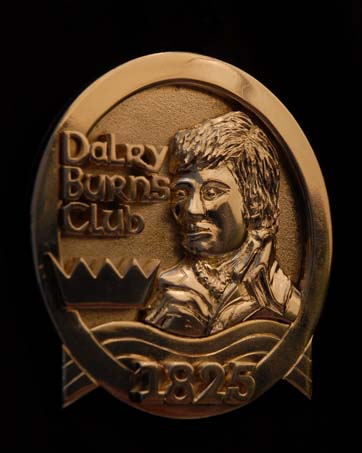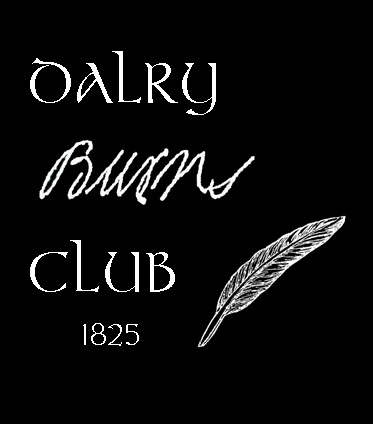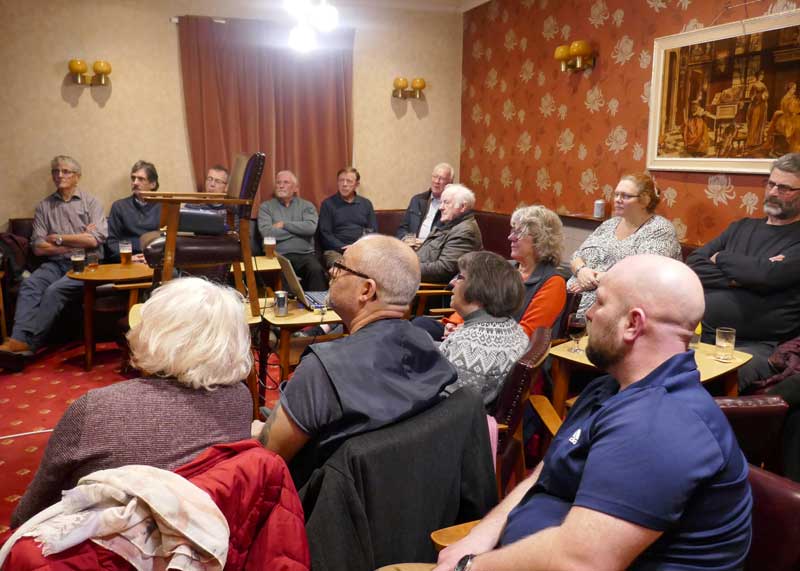


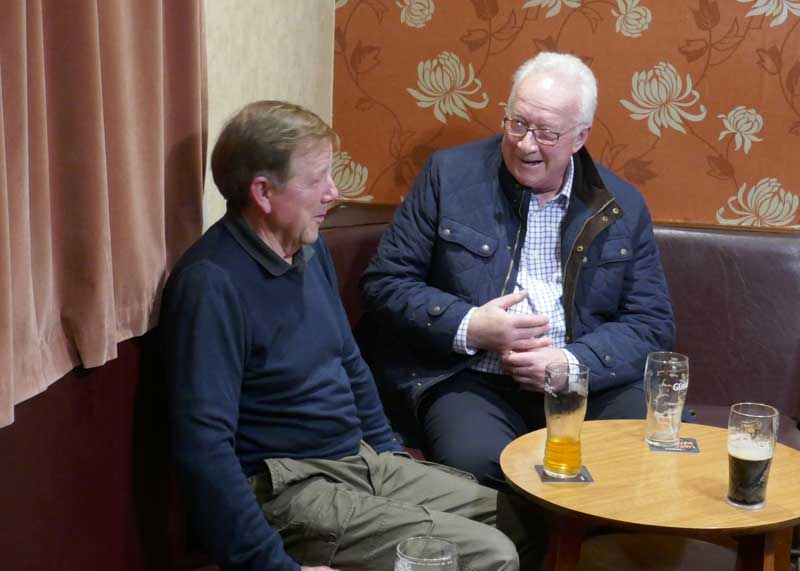
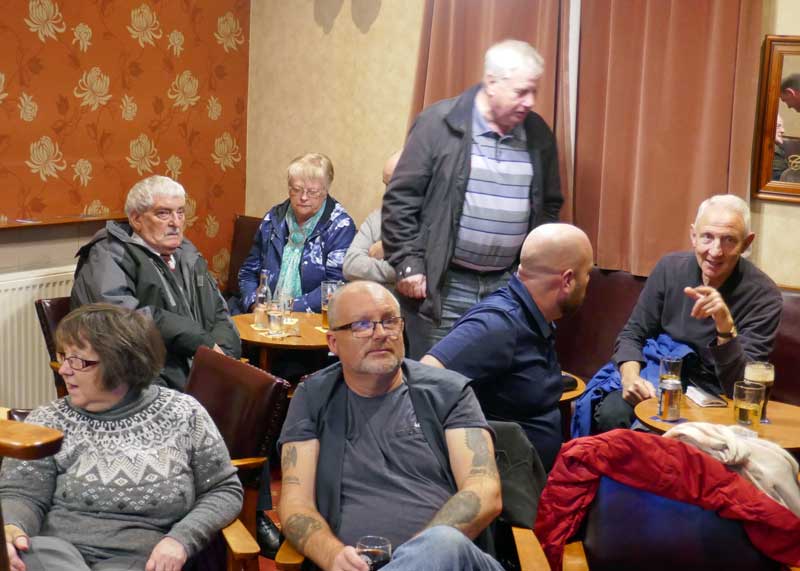

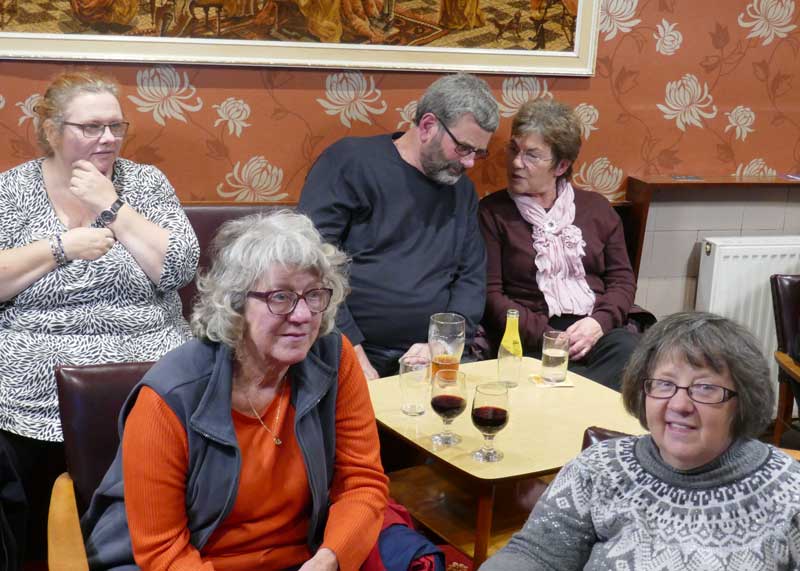

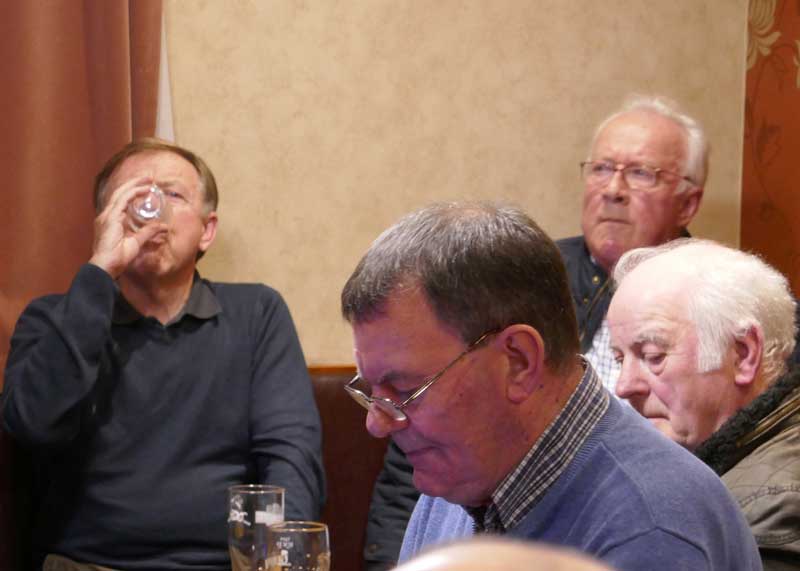
John C. Gillies was born on the 30th November, 1820 in Dalry, Ayrshire; his parents were John Snr. and John's wife, Marion Cochrane who lived at 41 Sharon Street. They already had two daughters, Mary and Ann, who were ten and fifteen years of age respectively. The new arrival was baptised in the old St . Margaret's Church on Christmas Eve of the same year. Not much is known about his childhood in Dalry but when he was five years old, his mother had another son named Alexander.
John's father was employed locally, at one time as a cotton hand loom weaver and later as a labourer. By the time all his children had reached the age of fifteen, they were also all employed as hand-loom weavers in the local cotton industry in Dalry.
The Dalry of John's time was a very different place from the town it is today. It was a small town of approximately one thousand inhabitants who mostly lived in and around the cross. At this time, the streets of the town were not paved or drained and when it rained (as it very occasionally does in the area) the town was described as resembling an island. Pigot and Company's Directory for the Dalry of the time tells us that Dalry was a pleasant little town whose streets radiate from a central square. The town from 1834 was lit by gas and the houses and shops were neat and well built. At this time, Dalry boasted three bakers, six grocers, six tailors, nine shoemakers, three butchers, nine vintners and two coaching inns. From the Crown Inn one could catch the "fair trader coach" to Glasgow every morning except Sundays at 8am or, from the King's Arms, the "herald coach" would transport you to Saltcoats and Ardrossan at 9am. Also at this time, if you needed the services of a solicitor or writer you could call on the services of one James Mccosh esq. who was also an agent for the Insurance Company of Scotland.
In 1848, John Gillies decided to seek his fortune in the United States of America. The reasons for his going were debt and illness, probably caused by the decline in the cotton industry and the potato famine, which had their effect on the community of Dalry. The only person he told about his plans was his friend Hyndman and he said he would travel to America with Gillies..
They left Dalry early on the morning of the 26th March, 1848 without telling anyone. All they took with them were a few sandwiches each and a little money: very little money. They did not even have a spare shirt to put on their backs. They set off to walk to Troon probably via Dalgarven, Kilwinning and thence by Irvine Moor across the River Irvine and along the beach to Troon. They may have received a lift part of the way on one of the returning Dalgarven bean boats (not actually boats but horse-drawn carts which brought beans from Irvine harbour to the mill at Dalgarven). After they left Irvine, Gillies took ill and they had to sit at the side of the road for a while until he was fit enough to carry on. Then, with the help of Hyndman, they reached Troon about noon.
In Troon, they heard there was a ship going to Fleetwood and they boarded it. Gillies was very unwell at this time. The ship left Troon at 5pm and they reached Fleetwood at 7am the next day. From Fleetwood, they took the train to Liverpool. They had intended to travel via London but a Scotsman with whom they had spoken advised them it was best to travel via Liverpool. When they told him they had no money he took them to an office and introduced them to a Captain Males of the brig Gipsy who took them on as part of the crew. They were to be paid £5 between them only when they reached New Orleans. They also had to provide their own provisions for the voyage. This was on the 28th March and the Gipsy did not sail until March 31st.
For those of you with a nautical interest, Merseyside Maritime Museum were able to tell me that the brig Gipsy was built and registered in Port Glasgow in 1825 and was of 175 tons burthen. She was owned by Kerr and Company of Greenock and after being sheathed in yellow metal in 1848 was classified a1 at Lloyds. 175 tons is not a very big ship in which to sail the Atlantic!
They walked about Liverpool in the interval and slept where they could. They met three other men from Dalry named Ferguson, Love and Hunter who were also going to America on a ship called the Forfarshire. On March 30th, they bought their provisions for the voyage. By this time, all the money they had between them was twenty-one shillings. Their provisions were a quantity of meal and bran biscuits, a little coffee and sugar, a bit of pork ham and a pound of butter. With their last penny, they bought a can to drink from. The Gipsy sailed from Liverpool on March 31st and did not arrive in New Orleans until May 29th: this gives some idea of how they were going to live on their provisions. The night before the ship sailed, at about 2am, (when all were asleep but Gillies), a young Irish woman began to bawl and shout in the berth next to him, to such an extent that he went to see what was the matter with her. He found that she was just about to give birth. He immediately roused Hyndman to assist him. The young woman gave birth to a son while they were - as he puts it - "acting as howdy wives". Unfortunately, the baby died on the Friday after they sailed and Gillies saw it heaved overboard. On the fifth day out, they ran into stormy weather and as he had never experienced such weather he became very seasick. He was sick for twelve days during which time he could eat nothing. One of the other passengers gave him a glass of rum and another gave him eight potatoes which seemed to settle his stomach. After his sea sickness, he had what is described as a bad mouth for ten days. This was probably scurvy and he could eat nothing. By this time, his health was indeed very bad; he was weak and had nothing to make him better. What was worse, his provisions were almost finished except for the meal and bran biscuits.
Becoming a little better, he started to work with the carpenter who was a Scotsman. He also got on well with Captain Males who fished quite a bit and always gave him some of the catch. He says that one night his supper consisted of a bit of a young whale and, on another two nights, of dolphins "which were very good". The seafood helped to make the meal and bran biscuits last longer. Acting as a barber to all on board, he shaved a young Glasgow man an hour before he died and was heaved overboard.
Gillies had not taken off his clothes since he had left Dalry, so one day he washed his shirt and hung it out to dry but the wind blew it overboard and, not having another one to put on, he was in a pretty sorry state. He kept up his spirits as best he could but it nearly defeated him and made him sorry for the way he had left his home town. During the two-month voyage, there were eleven deaths and it was a case of survival of the fittest. At long last, however, they landed at New Orleans on May 29th but his troubles were by no means over. Captain Males paid him his share of the £5 promised and secured him a job but he was again so very bad with a bowel complaint through drinking river water that he was unable to work. After he did recover and started to work he suffered from sunstroke and that was as bad as anything he had previously come through.
Hyndman left him here to travel further up the Mississippi to St. Louis and Gillies was left behind, alone in a strange place and so very sick that he thought he was finished. When he became a little better, he found he could just manage the cheapest passage to St. Louis by river steamer. The ship he took was called the Sultana and for once Gillies, unknown to him, was so very lucky. Seventeen years later the Sultana, again heading north up the Mississippi with two thousand, four hundred liberated federal prisoners of war from the infamous Andersonville Confederate prisoner of war camp, suffered a major boiler explosion when just north of Memphis and approximately eighteen hundred persons lost their lives: the date was the 27th April 1865.
John Gillies boarded the Sultana and sailed north on a Tuesday night. All the provisions he could afford for the seven or eight days to St. Louis were three loaves. Two nights before he reached St. Louis, he became very ill again. That night about 11pm, the unlucky Sultana was in collision with another river steamer, the Grey Eagle. That night, John had been lying on some salt bags on the deck which, in the collision, were scattered all over the place. Seven fellow passengers were not so lucky and were killed as a result of the collision; after this incident his health and spirits again became very low but he fought against it. His rations were also now finished and he had nothing to eat so he had to drink the filthy river water. He did not tell anyone of his plight but a fellow passenger - John Parkes - suspected and gave him a quarter to help him buy some food. The Sultana arrived at St. Louis on the next Tuesday about 7am. All this time, John had been lying on the salt bags: try as he would, he could not get to his feet to leave the ship. At this point, he gave up and thought all was lost. He knew he would be thrown off the ship and tears rolled down his cheeks. He was still in this state when a man came aboard; he looked at John in passing, came back and looked at him again and said, "Why Gillies? What are you doing here?" John was so weak he could not answer him: the tears just kept running down his face. The man who had found him, by sheer chance, was another Dalry man called James Stirrat who recognised John from home.
James Stirrat carried John ashore to his home where his wife nursed John back to health. At this time John Gillies weighed only seven stone. This was the turning point for John: when recovered he went further up the Mississippi to Alton where there was quite a colony of Dalry people. Once in Alton, he took up agricultural engineering, prospered and in the year 1855, aged thirty-five, he married Martha Smith in the nearby town of Bunker Hill, Illinois. Shortly thereafter, they settled in the small town of Woodburn. By the year 1862 they had three children: Anne aged six, John (four) and Marion, named after his mother, who was an infant. On 6th August 1862, now aged thirty-eight, standing five feet, seven inches tall and weighing eight-and-a-half stone, John Gillies joined the Union Army for a three-year enlistment. Perhaps he was caught up in the explosion of patriotic fervour stirred up by General John McClernand, who was on a major recruiting drive in Illinois at that time or maybe the $100 bounty was the attraction; perhaps even it was for the higher ideal of freeing the slaves. In any case, he was enlisted in Company A of the 97th Illinois Volunteer Infantry then at Camp Butler near St. Louis. It was at this time he would be issued with probably the best suit of clothes he ever had in his life: dark blue serge jacket and trousers and a blue kepi. Once in his new uniform, basic training for the Union army of the time consisted of many things all called drill: trying to teach raw recruits how to move around a battlefield in some kind of formation without panicking in response to drum and bugle calls. Also at his time, John would be issued with a .577 Enfield or Springfield 3-band rifled musket which, in the hands of a skilled marksman, was lethal at three hundred to four hundred yards. The problem was that most of the generals of the time had not quite realised this yet. To load this weapon, troops were given fifty or so cartridges topped by the dreaded Minie ball, invented by the Frenchman Claude Minie. If you were good and did not panic as the enemy advanced towards you, you should be able to get off three rounds per minute. In comparison to the Confederate army, the Union army was, in general, well fed and equipped, dining on hard tack, salt meat and desiccated vegetables. The Confederates, on the other hand, were lucky to get a pan of "sloosh" every second or third day. Sloosh was bacon fat and cornmeal, sometimes cooked on the end of a ramrod and washed down with substitute coffee made from nuts.
John must have settled well into army life as he was promoted to corporal on November 12th, 1862. Shortly thereafter, John and the 97th sailed south down the Mississipi to the mouth of the Yazoo river just north of Vicksburg for their first taste of action. Their general in command, William Tecumseh Sherman, to lead them in an assault of the Vicksburg defences at Chickasaw Bluffs. On Christmas Day 1862, the Union force in sixty-four transports protected by three ironclad gunboats sailed ten miles up the Yazoo and landed at a place called Johnstone's Farm, just north of the Bluffs. The area was described by one of the recruits as being as desolate as the backside of the Moon, brooded over by cypresses and water oaks, with long grey beards of Spanish moss. In Scotland, we would have described the area as a bog but in the southern states they referred to these areas as bayous. After much disorganisation, the Union army dug in under the Bluffs in preparation for the attack which was not mounted until 29th December, when the whole line of four divisions (thirty-two thousand men) advanced at dawn. The Confederates were ready behind their defences and cut them to pieces. From the original force of 32,000, the union casualty figures amounted to 1776 (208 killed, 1005 wounded and 563 were captured or were missing in action). The attack had been a disaster, badly lead and badly executed. The Confederates' total losses amounted to 207. For the next few days, the Union soldiers, including John who had so far come through the battle unscathed, stayed in their trenches, most of the time waist-deep in muddy water, while the generals decided on their next move. It was probably at this time that John contracted nephritis: an enlargement of the kidneys and an illness which would afflict him for the rest of his life.
On the 3rd January 1863, for many strategic reasons, the Union forces withdrew from the Bluffs back to their original forward base at Millikins Bend just north of Vicksburg on the Mississipi River. Almost as an afterthought, and perhaps to save face, General Sherman, now joined by General McClernand, decided to try to redeem the army's reputation by attacking Fort Hindman (or Arkansas Post) on the Arkansas River above Vicksburg which had been sending out troops to raid Union supply lines and interrupt the Union's communications. On the 11th january 1863, the square-shaped fort set in a horseshoe bend of the river was attacked by the ironclad gunboats Louisville, De Kalb and Cincinnatti. The 5000 Confederate defenders gave good return fire from their 3x9 inch Columbaid cannon and at dusk the gunboats withdrew. The fort was attacked the following day, this time by the 30,000 Union infantry which included John's unit "Co. A of the 97th Illinois". After a hot fire fight in which the attackers sustained a total of 1,100 casualties, the Confederate commander Col. John Dunnington surrendered his remaining force of 4,791, having sustained only 109 casualties. The whole operation could be summarised by saying the Union had used a sledgehammer to crack a small Confederate nut. Our Dalry man, John Gillies, had taken part in the attack and survived. He was now in deteriorating health again and had fought his last battle for the Union army.
The next trace of John records him on the 1st May, 1863 as being a patient in the Union field hospital at Smith's Plantation in Louisiana, suffering from acute nephritis and rheumatism. His illness continued and, between July 1863 and January 1864, he was cared for on the hospital ship Nashville which was moored near Vicksburg, which had fallen to Union forces on the 4th July 1863. By January 1864, John must have recovered somewhat because on the 15th of that month he was transferred from the 97th. to the "army invalid corps". In this capacity, he would be detailed to assist in the guarding of prisoners and other lighter types of duty. On the 1st July 1865, John was finally discharged from the Union army at Indianapolis. the civil war having ended in a Union victory in June of that year. For his services and subsequent illness sustained on duty he was awarded an army disablement pension which he received for the rest of his long life.
On his return from the war, John continued family life and fathered three more sons by the year 1873, despite his incapacity. The next year his wife of nineteen years, Martha, died and in the following year John, now aged 54, married his second wife: Mary Bannister. She in turn died ten years later in 1885. Although it was now thirty-seven years since he had left Dalry, John never forgot his home town and he took care to ensure that all his children were made aware of their roots in far-off Ayrshire. John himself was never to see his home town of Dalry again. Twenty-three years later, survived by two of his daughters and two of his sons, John Cochrane Gillies died peacefully aged 87 in the year 1908, at the home of his daughter Anne in Bunker Hill, Illinois. He was buried in the nearby cemetery at Woodburn where his Masonic brethren were in charge of the graveside service. John's descendants to this day are still very proud of their ancestor's history and lineage from Dalry. His great-great-grandson on his mother's side, Robert Doyle of West Hollywood, California is still researching his Scottish family ties. John Cochrane Gillies still has one surviving relative living in Dalry: his great-great-niece, Betty Mcintyre, who lives in Mair Avenue. Unfortunately, his two other great-great-nieces - May and Jessie Tait who lived in Russell Drive, Dalry - have passed away. To these two wonderful ladies, I owe a great debt as, without their help and the help also of the late Jim Kelso and Hugh Mctaggart, I would have been unable to record the story of John Cochrane Gillies.
Research and Text by Murray Wilson
Chairman
Dalry Burns Club
